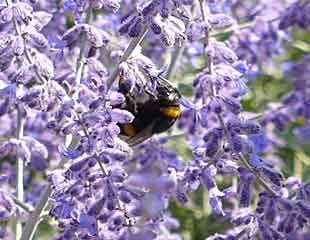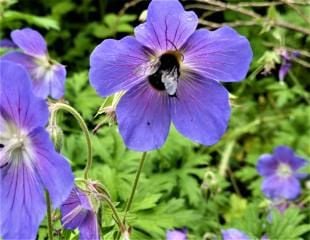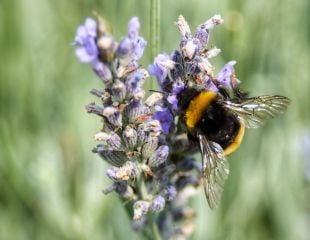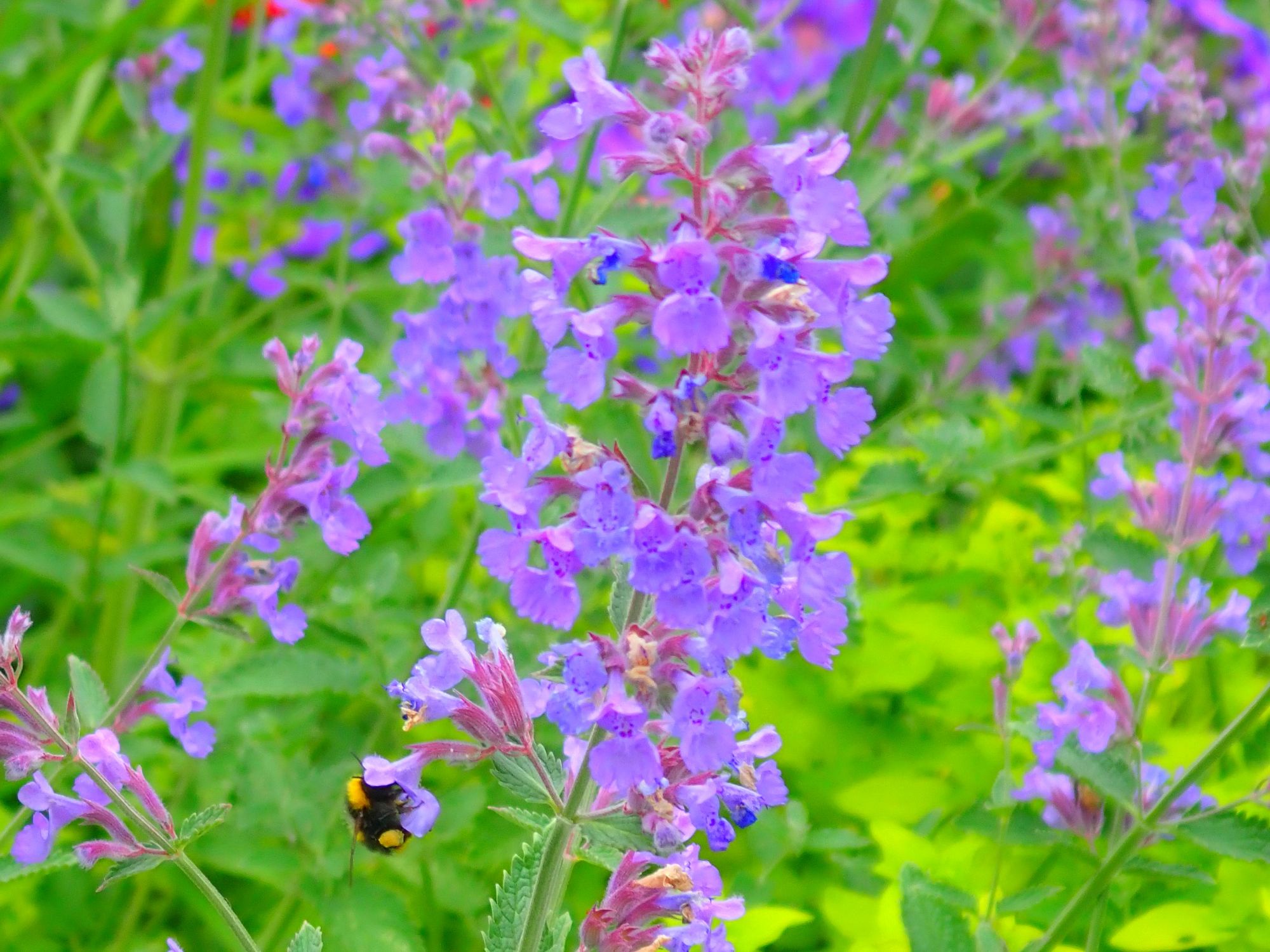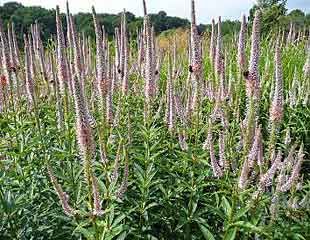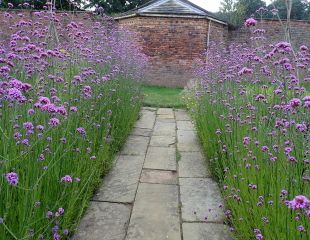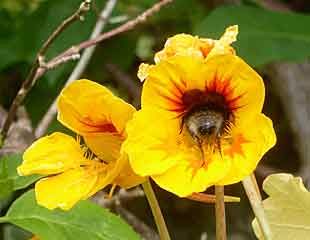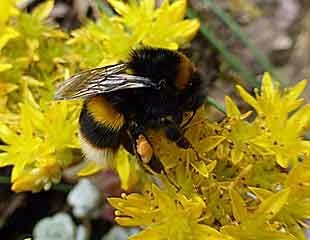
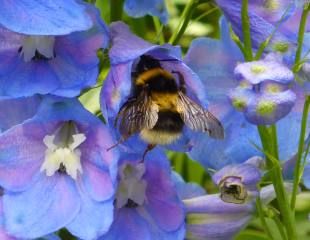
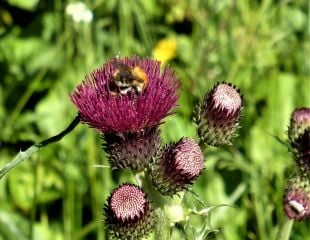
Plant, Shrubs and Flowers Attractive to Bumblebees
The Scientific research
The Natural History Museum has looked closely at the relationship between loss of bee habitat, climate change and the decline in Bumblebees numbers. It concluded that the loss of bumblebee habitat was adversely effecting bee numbers, which is then aggravated by climate change. The Journal Nature published the full findings.
Bumblebees are efficient pollinators of many crops and wildflowers. They are irreplaceable in the pollination of tomatoes. In Iceland, I visited greenhouses that grow tomatoes during the winter using geothermal heat. These greenhouses import bumblebees in boxes and release them to pollinate the tomato and pepper plants.
The third issues to affect bees has been the increased use of pesticides, including the now banned Neonicotinoids. Pesticides harm all bees and pollinators; although neonicotinoids were banned in 2018, many other chemicals remain in use.
And now the not unsurprising news that the extremes of heat are also affecting the Bumblebee population, depleting their numbers.
What can we do to Help Bumblebees?
As gardeners, we cannot restore all the bees' habitat. Here are a few suggestions.
The Natural History Museum's research makes it clear that gardeners can help by having a patch of nectar rich plants to create a bee friendly environment. There are lots of ideas about plants which provide nectar from early in the year to late Autumn, suggestions below. All round food is important to Bumblebees. Also, if you can allow part of your garden to be wild, with native wildflowers, this is a bee friendly environment.
As gardeners, we can reduce our use of pesticides and sprays, and substitute organic products.
There has been a lot of controversy around the provenance of the plant we buy. It is all very well if we, as gardeners, stop using sprays and peat free compost. It is difficult for the average gardener to know what the grower has used to bring the healthy-looking plant to market. I've noticed a growing, though limited, trend of growers providing information about plant origins. One way to be sure is to raise some plants from seed, or buy organic.
The so-called "Bee Friendly" plants starkly revealed this issue. The push for bee-friendly gardening led to the designation of certain plants as "Bee Friendly". Unfortunately, someone later found various insecticides sprayed on some of these "bee-friendly" plants, undermining the objective.
Scientific journals suggest that ensuring there are cooler shady areas in the garden are important for Bumblebees to provide a haven on hot days. Planting a mix of trees and shrubs will provide shade. Also, some shrubs ameliorate the effects of pollution are well worth considering.
We are more interested in where food comes from; we need to be more interested where the bees' food comes from as well.
If you want to identify bees is in your garden, this is a great free guide from Friends of the Earth with good clear descriptions and illustrations.
If you are interested in creating a more wildlife friendly garden, the Sunday Gardener has several pages with information about plants and shrubs which are attractive to bees and butterflies.
Check out
Having an area in the garden which is less tended, let leaf litter accumulate (good for nesting) with areas of unmown grass and native wildflowers is great for many pollinators. Bumblebees are attracted to many wild flowers, one of the best is Red Clover. The image below is of a part of my garden left over an extended period to go its own way. It does require a little attention to remove and cut back some thugs, so that there are not too many brambles, or rosebay willowherb to keep a balance.
Leaving this area to its own devices has allowed Marsh Marigolds, Red and White Campion, Nettles, Meadow Sweet, Cow Parsley, Persicaria bistorta, Primula, Foxglove, Buttercup, Daisy, Wild Flag Iris, Ivy leaved Toad Flax, wild orchid, and Ferns to take root in the wild area over the years. Into which I have also introduced Bluebells, Hellebores, Pulmonaria and Meadow Geranium. Below is an image of part of the area in late spring showing the untended the wild area.
Plants and Flowers for Bumble Bees
Most male Bumblebees die off before winter leaving the Queens to overwinter in the soil. They emerge hungry, which is why early flowering plants are so productive for the bees.
Early flowering plants for bees
Pulmonaria
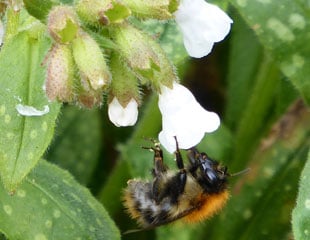
Flowering from February onwards pulmonaria are an ideal early nectar plant. Pulmonaria is a hardy perennial and shade loving.
Rosemary
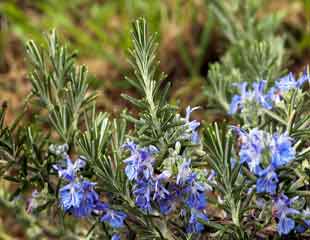
Rosemary flowers at different times of the year often flowering in winter and early spring. Rosemary needs a dry sunny spot with well drained soil.
Primrose
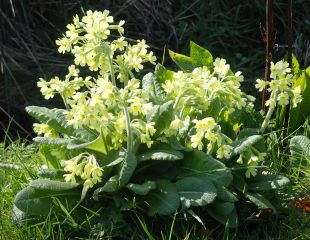
In flower from early spring, Primrose, a member of the Primula family, is ideal for emerging queens.
A hardy perennial, ideal growing in semi shade.
Aubretia
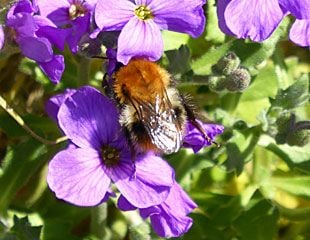
Aubretia flowers from around March, in some sheltered parts from February. It is an easy to grow, hardy perennial with a lovely display of mauve flowers drawing in the Bumble bees.
Spring and Summer flower plants for Bumble bees
Chives top of the list when it comes to bees
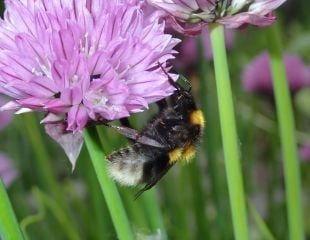
Chives Chives and more chives Bumble bees love them and simply cover the plant. It is worth looking at this short video to see Allium nutans Siberian chives much loved by Bees.
Digiitalis the Common foxglove

Digitalis the common foxglove is much love by bees who bury themselves in the trumpet-shaped flowers
The foxglove is a self seeding biennial tolerant of most conditions and easy to grow.
The Blues - Four blue plants bees love
Bees love blue and that includes Bumblebees. Illustrated here is Nepeta, Lavender (credit image Alexander Crawley ) Russian Sage and the hardy Geranium.
Listen to the buzz (video) of summer and see how much bees love blue.
Tall plants love by bees and gardeners
Veronica produces tall spikes of white, blue or pink which are attractive to bees. An easy to grow herbaceous perennial.
Another tall perennial is verbena bonariensis, which as attractive purple flowers liked by Bumblebees, and butterflies.
Cirsium rivulare The River Thistle

Cirsium rivalare Atropurpureum is one of the most bee loved thistles.
This is a hardy perennial which will tolerate a fair degree of wet with sun or partial shade.
I grew this along the sides of a stream where it enjoyed the damp conditions and was full of bees/
Delphiniums common name Larkspur
The tall spires of flowers are irresistible to bumblebees and make a great splash of colour in the garden. They look good planted with foxgloves for a double bee magnet.
Caveat though: Delphiniums are a red wheelbarrow plant and in our days ever changing weather Delphiniums like plenty of water and not ideal in dry conditions.
lonicera common name Honeysuckle

Bumblebees love honeysuckle enjoy the nectar rich flowers.
Honeysuckle is a bit of a winner winner, as moths also visited it, including the Elephant Hawk moth, which in turn is food for bats. Blackfly are attracted and they re preyed upon by Blue Tits, Lacewings and Ladybirds.
Nasturtium a colourful annual
Again, its the trumpet shaped flowers which bring the bees in, literally head first.
Nasturtium is an annual which germinates easily from seed and provides weeks of great colour and bees. Also good in human salads. Good to bring pollinators into the veg plot.
Late summer and autumn nectar for bees
Sedum pollinators friend

Sedums are attractive to all pollinators, including Bumblebees and flower late summer into early autumn, providing a late source of nectar. Check out this video showing Sedums great attractions.
English Ivy
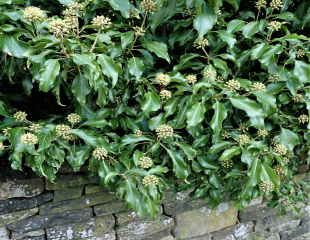
English Ivy makes a great shrubby hedge/over the wall cover. When it is mature it flowers and these flowers are excellent, and it is a good all round wildlife friendly plant.
Aster
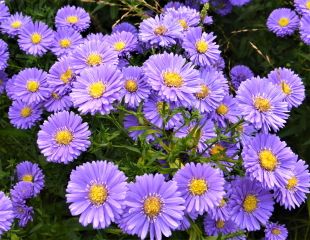
Asters flower in late summer through to autumn often flowering through to the end of October, depending on the weather. A simple daisy like flower attractive to bees.
Echinacea

Echinacea is a late summer flowering perennial. Its lovely, open flowers attract bees.
It is easy to grow, and flowers best in a sunny position.

